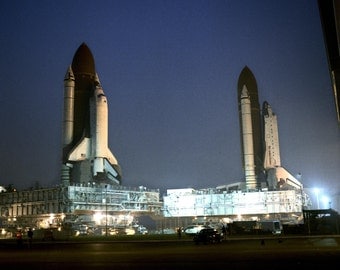Hobby Model 060 - Columbia Space Shuttle


Online shopping for space shuttle space program plastic models, saving you up to 55%. Items include and space program. Here is our build review of Monogram's 5904 1/72 Space Shuttle Columbia. The chaps at the local hobby establishment convinced me to. 1/72 Space Shuttle. Toys & Games Deals STEM Toys Preschool Toys Boys' Toys Girls' Toys Best Sellers New Releases Games Hobby. Columbia Space Shuttle Replica Model. Cambodia Commercial Law Pdf.
Background The world’s first successful reusable space vehicle was the United States’ Space Shuttle designed by Rockwell International. Under their contract, Rockwell built five vehicles: Enterprise, Columbia, Challenger, Discovery and Atlantis. Vehicle six, assembled from fleet spares, would become Endeavour and replace Challenger. Enterprise, named for the Star Trek Starship of the same name, was used to do the final testing of ‘dead-stick’ landing a vehicle of this size, which had been previously simulated extensively on computers and using surrogate aircraft. Mounted atop a modified Boeing 747, Enterprise was ‘dropped’ from altitude numerous times to prove the validity of all of the work accomplished to date. Xforce Keygen Autocad 2013. One of the distinguishing features of the Shuttle is its huge delta wing. An aerodynamic characteristic that NASA and the USAF learned from flight test and many years of experience is that the delta wing is an efficient cruiser until you raise the nose.
Telemarketing Website Templates. Once the nose comes up, whether in a turn or sudden pitch-up, the wing turns into an efficient speed brake. If you've ever watched an F-106 (another delta-wing aircraft) in the overhead pattern, he flys down the runway at 250+ knots and by the time he has pitched out 180 degrees into downwind (just a few seconds), he is already slow enough to safely extend his landing gear. The high-drag nature of that huge delta wing is one of the big pluses of the Shuttle. If you’ve watched some of the Shuttle-oriented movies like Space Camp or Space Cowboys, they both accurately depict that the nose of the shuttle needs to be kept up at a high (30-40 degree) angle during re-entry. In fact there are four larger thrusters in the nose for that very purpose.
At that angle, the bottom of the shuttle doubles as a heat shield and a speed brake, slowing the Shuttle from about Mach 25 at the beginning of re-entry to above Mach 1 as it passes over the runway on its outbound approach leg. The final turn towards the runway brings the speed of the Shuttle down to approach speed and its ultimate 200 knot (240 MPH) touch-down speed. Columbia would be the first orbiter in space. With a crew of two seated in ejection seats, Columbia proved that the strap-on launch system, thermal tile protection and landing automation systems all worked as advertised. A new chapter of manned spaceflight was opened. Eventually the ejection seats were replaced with more crew positions and the orbiters were in the science business. The shuttle fleet can carry up to seven crewmembers aloft, though they had best not be claustrophobic!